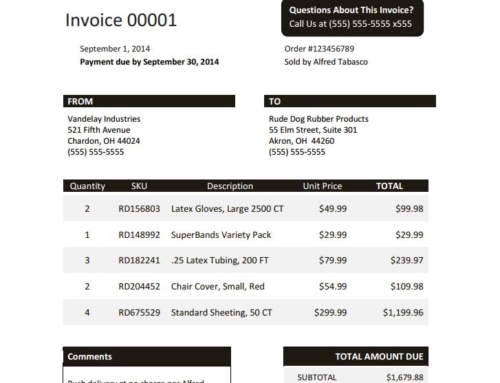Of the many challenges that come with running a profitable business, creating invoices quickly, receiving payment on time and keeping track of what’s been paid and what’s outstanding are among the most common and detrimental. Think about it; the longer it takes you to write up and send out an invoice, the longer it takes your customer to pay it. Meanwhile, whoever is in charge of invoice management is tasked with making sure the invoice doesn’t slip through the cracks; and the company must come up with the cash required to cover expenses until payment is received. Doing this for one invoice wouldn’t be so bad, but when you think about how many invoices you send out you can see where things get complicated, not to mention costly. Simplifying this process is the purpose and advantage of an automated billing system. Keep reading to learn how modern billing software benefits companies by generating and tracking invoices significantly faster and easier; allowing them to get paid faster than with traditional methods.
With credit sales being such a common practice and collecting on those credit sales having such a large impact on finances, it’s surprising that studies still show that many companies continue to rely on manual processes and outdated software to manage all of the above activities. Below are 7 benefits of using billing software to automate your collections system.
CREATE INVOICES QUICKLY
Creating invoices is time consuming, invoicing software makes it faster by allowing users to quickly modify templates in just a few clicks.
CREATE AND SAVE CUSTOM TEMPLATES
Some of your customers may have specific formats and information required to process payment. If your invoice doesn’t give them what they need the first time, payment will be delayed until these problems are resolved. Certain billing software solutions benefit both you and customers by allowing you to create and save custom templates so you are always providing invoices in the correct format for quick and easy payment.
AUTOMATE COMMUNICATIONS
As noted above, your organization is responsible for making sure money owed to you doesn’t slip through the cracks; but that’s not easy when you have so many invoices to track. Invoicing software solves this issue for you when you can automate payment reminder letters, statements, and late notices so you never forget to let customers know their payment deadline is approaching or that they are overdue. Sometimes an email is not enough and a phone call may be required. Some automated billing systems provide the added benefit of automatically updating your calendar to remind you about follow-up calls based on the rules you have defined.
ENSURE ACCURATE INFORMATION
How old is the data you’re working off of today? In many cases businesses who are not using billing software relay on aging reports and spreadsheets which require manual updates. Another benefit of billing software is its direct link to your accounting or ERP system ensuring that it is always up to date so you are never contacting customers about an invoice they have already paid, working off of old information, or spending time re-keying information when you could be spending your time on more important activities.
EVERYTHING IS IN ONE PLACE
Stop wasting time bouncing in and out of different applications, with billing software you will have everything you need right in front of you to know exactly what is due, when it’s due, what has been done, what needs to be done and who to contact about the invoice in question.
ACCEPT PAYMENT ONLINE
When payment is easier, it gets done faster. Billing software enables you to send secure links to invoices via email; from there your customers can sign into a payment portal and pay their invoices online instantly.
BUSINESS INTELLIGENCE
If you’re currently using manual processes like spreadsheets as the foundation of your strategy, gathering and analyzing information is extremely time-consuming. Choose a billing and invoicing software solution with an accounts receivable dashboard that gives you the benefit of instant access to data to help you monitor and measure accounts receivable performance. The dashboard summarizes important performance indicators such as:
- Percent of overdue receivables
- Average time to receive payment per invoice
- Accounts receivable turnover ratio
- Average days receivable
- Current A/R aging by invoice date
- Average days to pay
- Current days sales outstanding and a view of the 6 month DSO trend
- A cash summary
- Top delinquent accounts
- Summary of collection activities




